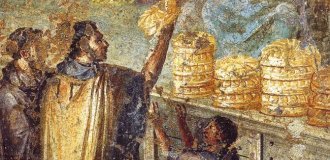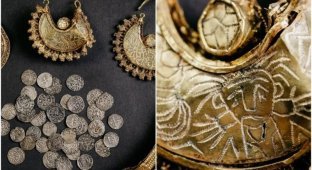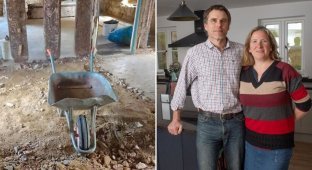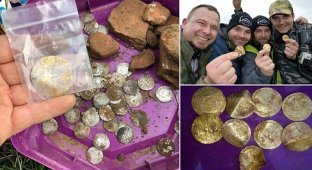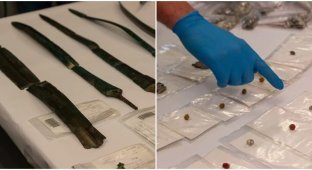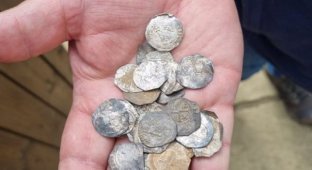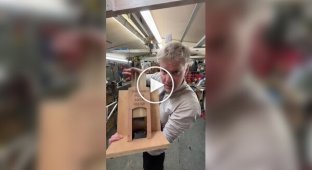The Hoxne Hoard (10 photos)
The Hoxne Hoard is a collection of ancient coins and household items. It was discovered by Eric Lowell, a resident of the village of Hoxne in Suffolk, in 1992. Having lost his hammer, Eric began to look for it with a metal detector - but instead he found 14,865 silver coins, more than 200 pieces of silver tableware and many gold ornaments. The hoard was dated to 407 AD. 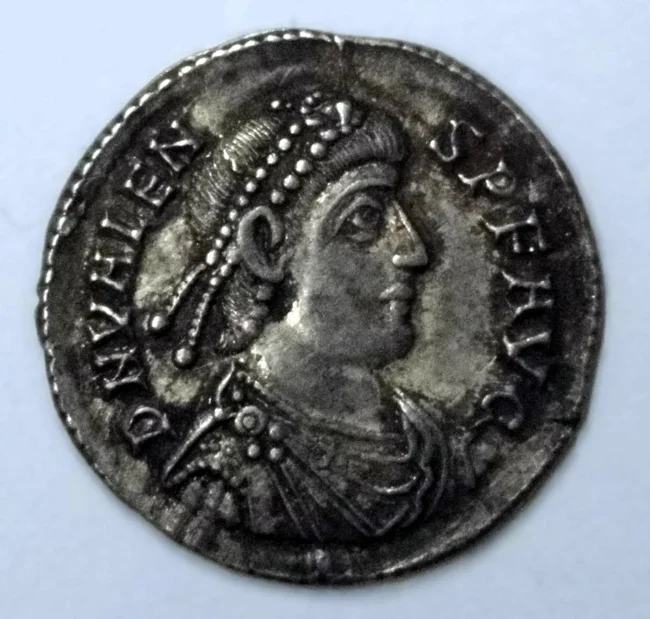
In 1992, a humble farmer Peter Watling lost his hammer while ploughing a field in autumn. At first, Peter tried to find it himself, but he failed. The loss of the sledgehammer upset the thrifty farmer, so he called Eric Lowes, who had a metal detector, for help. Of course, he happily responded to his friend's request.
Before his retirement, Lowes' colleagues gave him a metal detector. And for some time, the pensioner consoled himself with the hope that he would find the treasure. He really did explore the area with this device for several months. Alas, he could not find anything. So Eric abandoned his research, and the metal detector has been gathering dust in the barn ever since.
As a result, the friends resolutely set out to search for the hammer the next day, not forgetting to grab a metal detector and a shovel. All these events took place near the village of Hoxne in Suffolk. 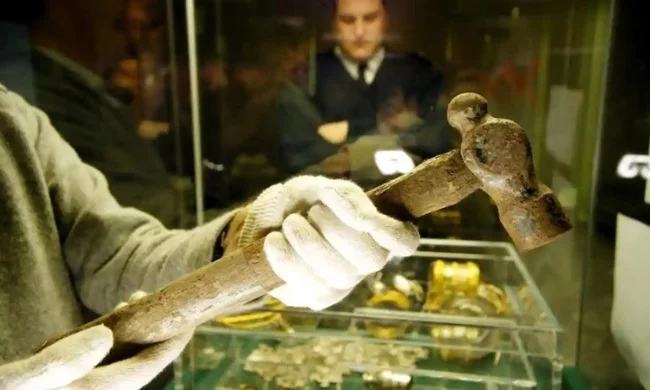
Less than an hour into the search, 69-year-old Laws heard a loud signal and began digging to see what he had found. Imagine his surprise when, after digging just a few times, he saw an old coin.
Then Laws and Watling happily continued digging.
With excitement, they dug up a couple of silver spoons, several gold coins and jewelry. The friends could not believe their eyes, because they were only looking for an old hammer.
Naturally, Laws realized that they had found an ancient treasure. Being an extremely law-abiding citizen, he immediately called the police and the local archaeological society and informed them of his discovery. After all, according to English law, all treasures found in the ground become the property of the Crown unless their owner comes forward. And the person who finds the treasure is given a reward depending on the value of the treasure.
The treasure was found on November 16, 1992. The next day, specialists from the Suffolk archaeological unit arrived at the site. During the excavations, they found the remains of a chest in the ground, which contained coins and various valuables. It became clear to the archaeologists that the elderly pensioner had found a large treasure from the times of the Roman Empire. 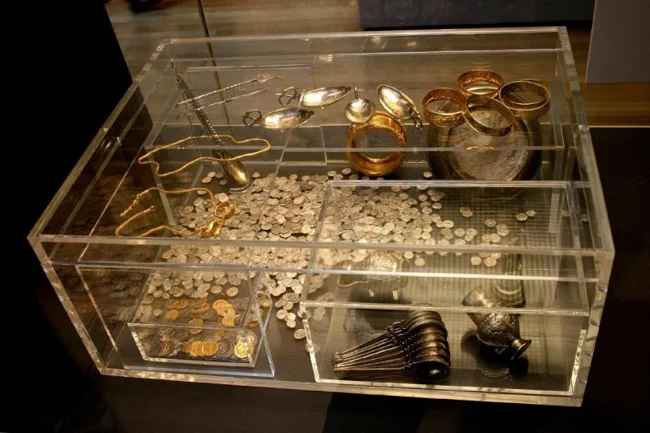
The archaeologists also searched the area within a 30-meter radius of the chest using metal detectors.
If you are interested in the fate of the lost hammer, the archaeologists found it in the same field. Subsequently, the British Museum was so impressed by the funny story of the search for the hammer that they asked the farmer to give it to the museum, where the hammer is now proudly displayed next to the treasure. 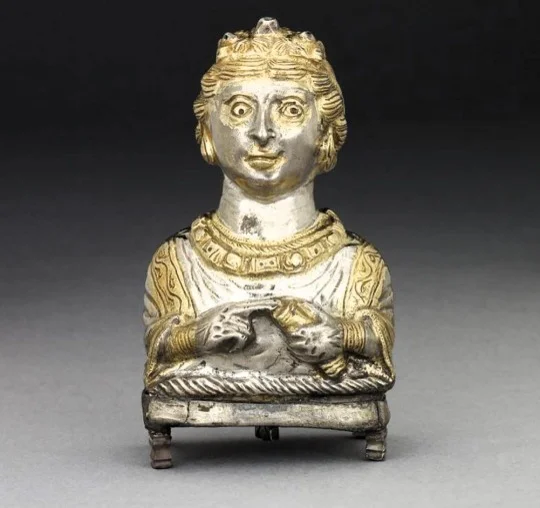
"They say we should have kept it all for ourselves. But that's impossible: by law, all historical treasure found must be valued. And we ourselves would never have been able to bring all the valuables to the surface," - from an interview with E. Laws, 1992.
All the items, along with several layers of earth (to establish the age of the find), were immediately sent to the British Museum. There, the exhibits were carefully studied.
As a result of the examinations, the treasure was dated to 407-409 AD. The age of the treasure was also determined by the Roman coins found. At that time, Britain was one of the provinces of the Roman Empire. The island was under Roman rule from about 43 to 410.
The treasure weighed 27 kilograms. It consisted of over 15 thousand items: 14.8 thousand ancient Roman coins made of silver, bronze and gold, silver tableware, and 200 gold ornaments. All the finds can now be seen in the British Museum.
The treasure was named the Hoxne Hoard after the village near which it was found. It became the largest Roman-era treasure found in British history. It is hard to believe that the treasure lay untouched for over 1,500 years! 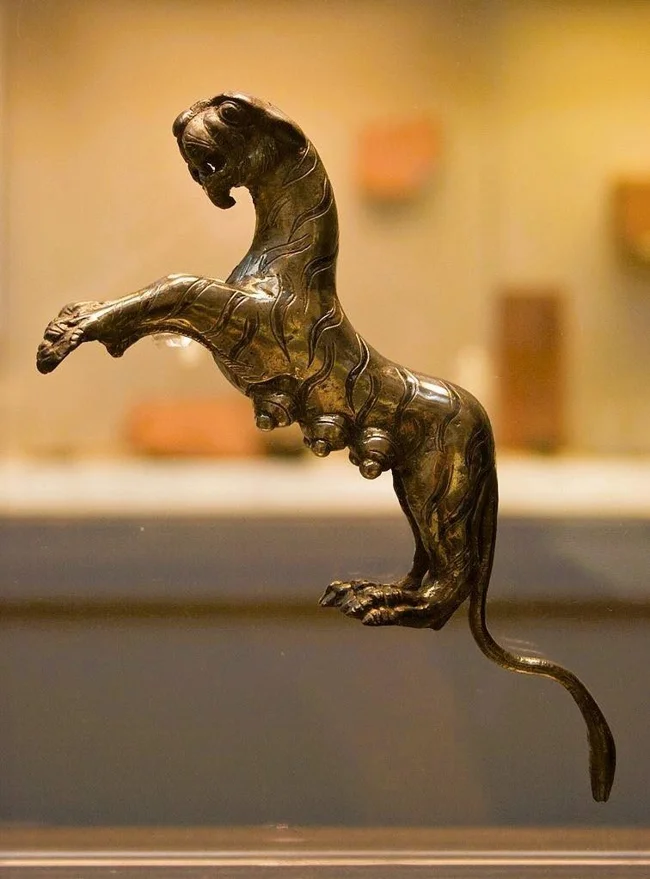
It is curious that the treasure itself was originally in an oak box. It contained items sorted into small bags and boxes, and some of them were wrapped in woolen cloth. The remains of the chest were almost rotten, so it was not possible to preserve them during excavations. The dimensions of the box were 60 by 45 centimeters.
All the items found were in excellent condition. The treasure included unique items that have since become famous: the original gilded "empress's pepper shaker", 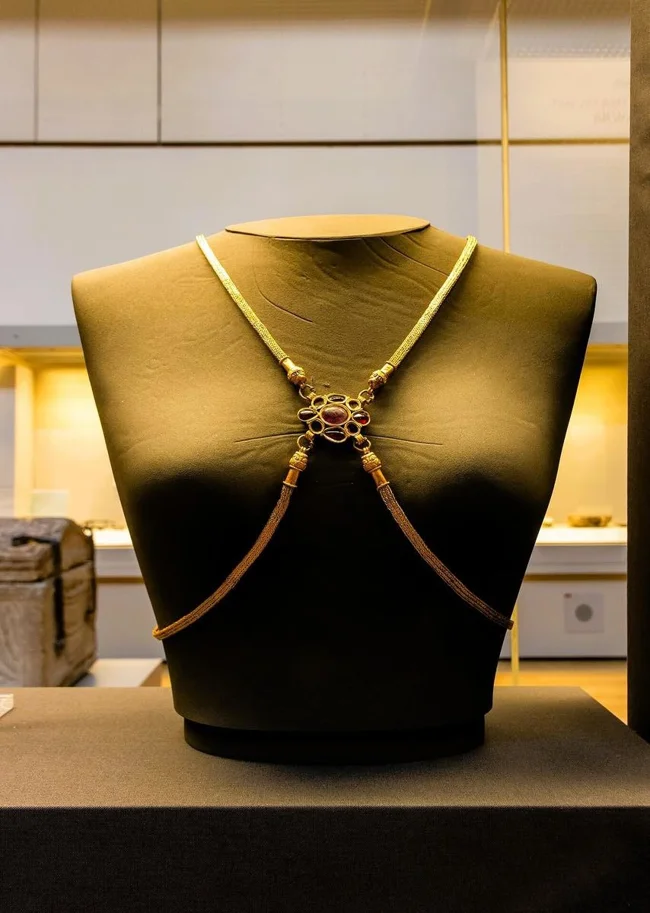
a gold pectoral chain with garnets. 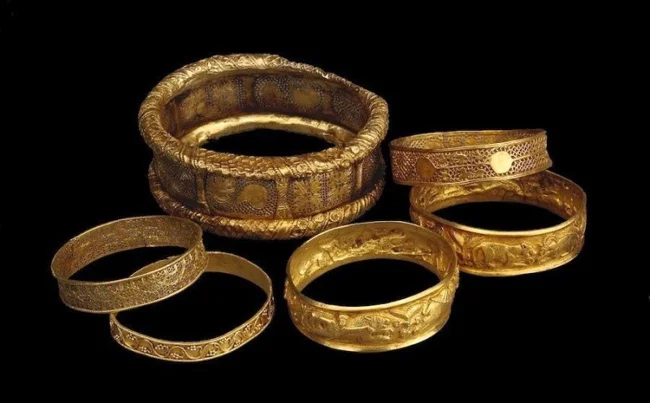
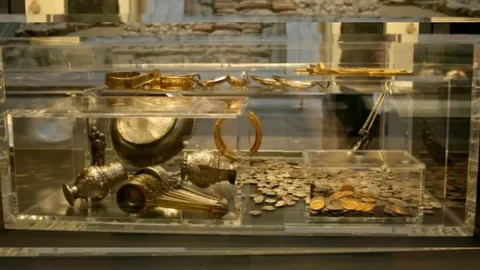
We can only guess who the owners of the chest were and for what reasons they buried it in the ground. The treasure was hidden during the era of great upheavals, when the main part of the Roman army was already leaving the island. It is possible that the frightened owners feared for their property and tried to save it from the raids of the Saxons or other tribes.
"The period from the late fourth century to 450, including the peak of wealth accumulation in Britain, saw numerous invasions of the empire by Germanic and Hunnic tribes, often followed by widespread destruction and disorder," writes archaeologist Peter Guest in Late Roman Gold and Silver Coins from the Hoxne Treasure.
The chest undoubtedly belonged to wealthy Romans. A year after its discovery, archaeologists again searched the fields of Suffolk. But there were no remains of Roman settlements there. It turned out that the nearest such settlement in the fifth century was 3 kilometers away. 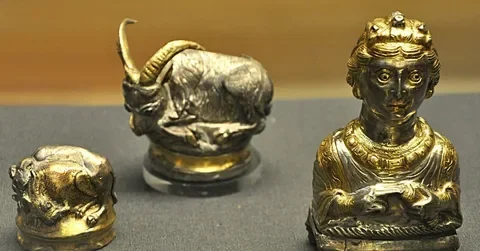
But other items from the Roman era were found, as well as a hole for a post near the place where the chest was found. It is possible that this was a signpost to a buried deposit. Probably, the owner of the treasure died without having time to tell anyone where it was.
Historians also have a version that the treasure could have been someone's loot and was hidden by robbers. Most likely, the treasure was not found earlier, because for many centuries the field was a pasture and the land was not cultivated.
And what happened to the amateur treasure hunter next? Eric Laws received a well-deserved reward of 1.7 million pounds sterling (about 2.2 million dollars) from the British government. After which the generous pensioner shared the money with his friend, farmer Watling, on whose land Laws found the treasure. He gave him half of the money. 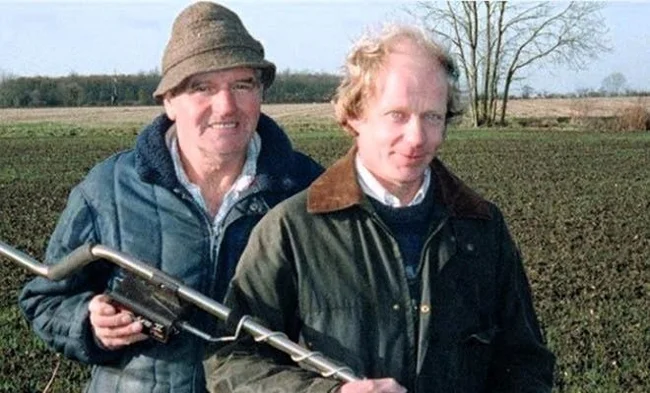
All the British media trumpeted the pensioner's grandiose find. Eric became a real celebrity, and Prince Charles (now the king) even met with him. However, Laws took the fame that had fallen upon him completely calmly. He was born and raised in Hoxne in a poor family. For many years he worked as a gardener, and then worked for a local company that distributed electricity.
At the time the treasure was discovered, Laws was already a widower. He gave part of the reward to his two sons, and with the other part he went on a trip around the world. Upon his return, the pensioner continued to lead a quiet life in his native village. Eric died in 2015 at the age of 92.
Sometimes you can find treasures when you least expect it. Miracles, and nothing more!










